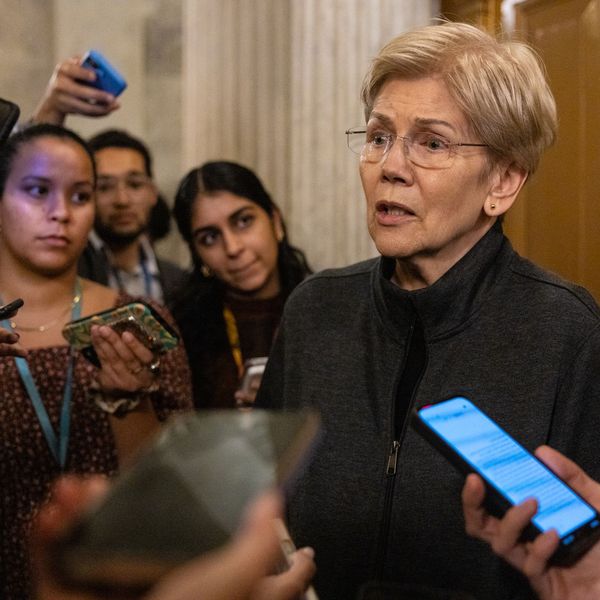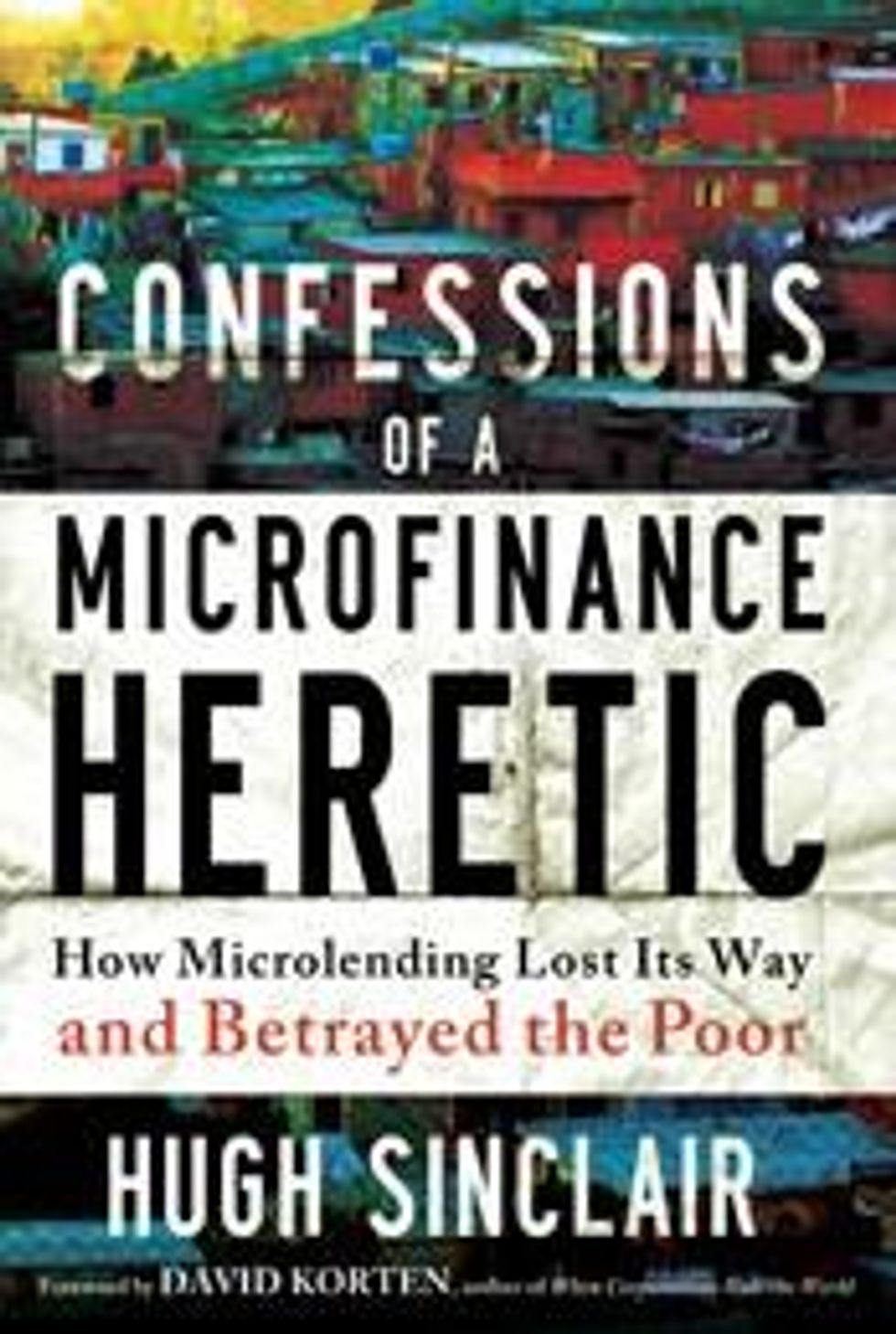The Wolf Is Guarding the Sheep: Why Microfinance Needs Regulation Too
In the wake of the biggest financial sector collapses in nearly a century, calls for increased regulation are commonplace. And yet the microfinance sector remains almost entirely immune from any oversight. The US general public generously lend to poor people in developing countries via lending platforms and specialized microfinance funds in the belief that their money is being used to help. Evidence to date challenges this belief. While the SEC appeared largely incapable of regulating the financial service sector in the US, it is either ridiculous or naive to the extreme to believe that the microfinance sector is somehow unaffected by the warped motivations that led us to the current mess. Philanthropy may encourage individuals to invest in microfinance, but there is no assurance that those managing the funds are as principled.
Microfinance faces mounting criticism. Mohammed Yunus, the Nobel Peace Prize winner often believed to have founded the microfinance movement, was fired last year from the bank he founded. A string of client suicides and cases of forced prostitution in India under the pressure of aggressive microfinance banks did little to improve the reputation of the industry. The microfinance sectors of entire countries have collapsed, perhaps most spectacularly in Nicaragua. Academic evidence is rapidly disputing the claims of poverty reduction following a $100 loan, and yet the US general public continues to provide the fuel for these fires with zero protection from the SEC, reassured only by the vague promises of self-regulatory bodies largely run and financed by, you guessed it, the microfinance funds. The wolf is guarding the sheep.
If microfinance really is a new asset class it should be regulated as such. Vast profits from over-hyped IPOs, most notably in India and Mexico, have yielded phenomenal returns for a few lucky players. The profit incentive, ever present where Wall Street operates, drives the financial sector of the planet. Regulators intervene to limit the damage such incentives can potentially have on vulnerable or uninformed citizens. The recent financial meltdown demonstrated the damage reckless profiteering can have on individuals, and entire countries. Apparently, when a US citizen lends $100 to a poor Nigerian woman through Kiva or the microfinance fund of some Wall Street behemoth, neither the US citizen nor the Nigerian woman requires regulatory oversight. Is it any surprise abuses occur?
US-based NGO Accion netted a tidy $270 million profit in the IPO of Compartamos, a Mexican microfinance bank that charges up to 195% in interest to the poor women of Mexico. Kiva invested $5 million, predominantly from the US general public, into a Nigerian bank that was charged interest rates of 126% and operating beyond the confines of even Nigerian banking law. Kiva users preferring to finance activities in Latin America could chose businesses as diverse as cock-fighting or coca leaf vendors, despite both being illegal under California State law. In the case of the questionable Nigerian bank, Kiva and various funds did eventually withdraw their investments once the media began investigating. The question is how, and why, did they invest in the bank in the first place? They either knew what was going on, or had no idea - it is not clear which is worse.
That microfinance can be profitable is well known, but less well known is the number of children of so-called micro-entrepreneurs who are removed from school to stack shelves or sell wares in their parents businesses, often in contravention the UN Convention on the Rights of the Child. We are told loans are used to finance entrepreneurial activities. Estimates of the proportion that is used for pure consumption are as high as 90%. Does this appear remotely transparent?
If microfinance is to survive the current wave of criticism, and improve its abysmal track record on poverty reduction, it appears that increased regulation might be a wise place to start. Those most vehemently against such regulation, the free-market devotees, will naturally resist such measures. But if we genuinely believe the poor deserve to participate in the financial services we take for granted, we should afford them the regulatory protection we also take for granted. Regulating the financial services sectors of developing countries is cumbersome, so perhaps instead we should regulate the microfinance funds and lending platforms in Europe and the US. This may reduce the atrocities practiced by the less scrupulous practitioners in the field, if their source of funding is jeopardized each time a client is forced into prostitution to service a loan; and it may reassure the general public that their funds are being deployed wisely rather than exploitatively.
An Urgent Message From Our Co-Founder
Dear Common Dreams reader, The U.S. is on a fast track to authoritarianism like nothing I've ever seen. Meanwhile, corporate news outlets are utterly capitulating to Trump, twisting their coverage to avoid drawing his ire while lining up to stuff cash in his pockets. That's why I believe that Common Dreams is doing the best and most consequential reporting that we've ever done. Our small but mighty team is a progressive reporting powerhouse, covering the news every day that the corporate media never will. Our mission has always been simple: To inform. To inspire. And to ignite change for the common good. Now here's the key piece that I want all our readers to understand: None of this would be possible without your financial support. That's not just some fundraising cliche. It's the absolute and literal truth. We don't accept corporate advertising and never will. We don't have a paywall because we don't think people should be blocked from critical news based on their ability to pay. Everything we do is funded by the donations of readers like you. Will you donate now to help power the nonprofit, independent reporting of Common Dreams? Thank you for being a vital member of our community. Together, we can keep independent journalism alive when it’s needed most. - Craig Brown, Co-founder |
In the wake of the biggest financial sector collapses in nearly a century, calls for increased regulation are commonplace. And yet the microfinance sector remains almost entirely immune from any oversight. The US general public generously lend to poor people in developing countries via lending platforms and specialized microfinance funds in the belief that their money is being used to help. Evidence to date challenges this belief. While the SEC appeared largely incapable of regulating the financial service sector in the US, it is either ridiculous or naive to the extreme to believe that the microfinance sector is somehow unaffected by the warped motivations that led us to the current mess. Philanthropy may encourage individuals to invest in microfinance, but there is no assurance that those managing the funds are as principled.
Microfinance faces mounting criticism. Mohammed Yunus, the Nobel Peace Prize winner often believed to have founded the microfinance movement, was fired last year from the bank he founded. A string of client suicides and cases of forced prostitution in India under the pressure of aggressive microfinance banks did little to improve the reputation of the industry. The microfinance sectors of entire countries have collapsed, perhaps most spectacularly in Nicaragua. Academic evidence is rapidly disputing the claims of poverty reduction following a $100 loan, and yet the US general public continues to provide the fuel for these fires with zero protection from the SEC, reassured only by the vague promises of self-regulatory bodies largely run and financed by, you guessed it, the microfinance funds. The wolf is guarding the sheep.
If microfinance really is a new asset class it should be regulated as such. Vast profits from over-hyped IPOs, most notably in India and Mexico, have yielded phenomenal returns for a few lucky players. The profit incentive, ever present where Wall Street operates, drives the financial sector of the planet. Regulators intervene to limit the damage such incentives can potentially have on vulnerable or uninformed citizens. The recent financial meltdown demonstrated the damage reckless profiteering can have on individuals, and entire countries. Apparently, when a US citizen lends $100 to a poor Nigerian woman through Kiva or the microfinance fund of some Wall Street behemoth, neither the US citizen nor the Nigerian woman requires regulatory oversight. Is it any surprise abuses occur?
US-based NGO Accion netted a tidy $270 million profit in the IPO of Compartamos, a Mexican microfinance bank that charges up to 195% in interest to the poor women of Mexico. Kiva invested $5 million, predominantly from the US general public, into a Nigerian bank that was charged interest rates of 126% and operating beyond the confines of even Nigerian banking law. Kiva users preferring to finance activities in Latin America could chose businesses as diverse as cock-fighting or coca leaf vendors, despite both being illegal under California State law. In the case of the questionable Nigerian bank, Kiva and various funds did eventually withdraw their investments once the media began investigating. The question is how, and why, did they invest in the bank in the first place? They either knew what was going on, or had no idea - it is not clear which is worse.
That microfinance can be profitable is well known, but less well known is the number of children of so-called micro-entrepreneurs who are removed from school to stack shelves or sell wares in their parents businesses, often in contravention the UN Convention on the Rights of the Child. We are told loans are used to finance entrepreneurial activities. Estimates of the proportion that is used for pure consumption are as high as 90%. Does this appear remotely transparent?
If microfinance is to survive the current wave of criticism, and improve its abysmal track record on poverty reduction, it appears that increased regulation might be a wise place to start. Those most vehemently against such regulation, the free-market devotees, will naturally resist such measures. But if we genuinely believe the poor deserve to participate in the financial services we take for granted, we should afford them the regulatory protection we also take for granted. Regulating the financial services sectors of developing countries is cumbersome, so perhaps instead we should regulate the microfinance funds and lending platforms in Europe and the US. This may reduce the atrocities practiced by the less scrupulous practitioners in the field, if their source of funding is jeopardized each time a client is forced into prostitution to service a loan; and it may reassure the general public that their funds are being deployed wisely rather than exploitatively.
In the wake of the biggest financial sector collapses in nearly a century, calls for increased regulation are commonplace. And yet the microfinance sector remains almost entirely immune from any oversight. The US general public generously lend to poor people in developing countries via lending platforms and specialized microfinance funds in the belief that their money is being used to help. Evidence to date challenges this belief. While the SEC appeared largely incapable of regulating the financial service sector in the US, it is either ridiculous or naive to the extreme to believe that the microfinance sector is somehow unaffected by the warped motivations that led us to the current mess. Philanthropy may encourage individuals to invest in microfinance, but there is no assurance that those managing the funds are as principled.
Microfinance faces mounting criticism. Mohammed Yunus, the Nobel Peace Prize winner often believed to have founded the microfinance movement, was fired last year from the bank he founded. A string of client suicides and cases of forced prostitution in India under the pressure of aggressive microfinance banks did little to improve the reputation of the industry. The microfinance sectors of entire countries have collapsed, perhaps most spectacularly in Nicaragua. Academic evidence is rapidly disputing the claims of poverty reduction following a $100 loan, and yet the US general public continues to provide the fuel for these fires with zero protection from the SEC, reassured only by the vague promises of self-regulatory bodies largely run and financed by, you guessed it, the microfinance funds. The wolf is guarding the sheep.
If microfinance really is a new asset class it should be regulated as such. Vast profits from over-hyped IPOs, most notably in India and Mexico, have yielded phenomenal returns for a few lucky players. The profit incentive, ever present where Wall Street operates, drives the financial sector of the planet. Regulators intervene to limit the damage such incentives can potentially have on vulnerable or uninformed citizens. The recent financial meltdown demonstrated the damage reckless profiteering can have on individuals, and entire countries. Apparently, when a US citizen lends $100 to a poor Nigerian woman through Kiva or the microfinance fund of some Wall Street behemoth, neither the US citizen nor the Nigerian woman requires regulatory oversight. Is it any surprise abuses occur?
US-based NGO Accion netted a tidy $270 million profit in the IPO of Compartamos, a Mexican microfinance bank that charges up to 195% in interest to the poor women of Mexico. Kiva invested $5 million, predominantly from the US general public, into a Nigerian bank that was charged interest rates of 126% and operating beyond the confines of even Nigerian banking law. Kiva users preferring to finance activities in Latin America could chose businesses as diverse as cock-fighting or coca leaf vendors, despite both being illegal under California State law. In the case of the questionable Nigerian bank, Kiva and various funds did eventually withdraw their investments once the media began investigating. The question is how, and why, did they invest in the bank in the first place? They either knew what was going on, or had no idea - it is not clear which is worse.
That microfinance can be profitable is well known, but less well known is the number of children of so-called micro-entrepreneurs who are removed from school to stack shelves or sell wares in their parents businesses, often in contravention the UN Convention on the Rights of the Child. We are told loans are used to finance entrepreneurial activities. Estimates of the proportion that is used for pure consumption are as high as 90%. Does this appear remotely transparent?
If microfinance is to survive the current wave of criticism, and improve its abysmal track record on poverty reduction, it appears that increased regulation might be a wise place to start. Those most vehemently against such regulation, the free-market devotees, will naturally resist such measures. But if we genuinely believe the poor deserve to participate in the financial services we take for granted, we should afford them the regulatory protection we also take for granted. Regulating the financial services sectors of developing countries is cumbersome, so perhaps instead we should regulate the microfinance funds and lending platforms in Europe and the US. This may reduce the atrocities practiced by the less scrupulous practitioners in the field, if their source of funding is jeopardized each time a client is forced into prostitution to service a loan; and it may reassure the general public that their funds are being deployed wisely rather than exploitatively.


